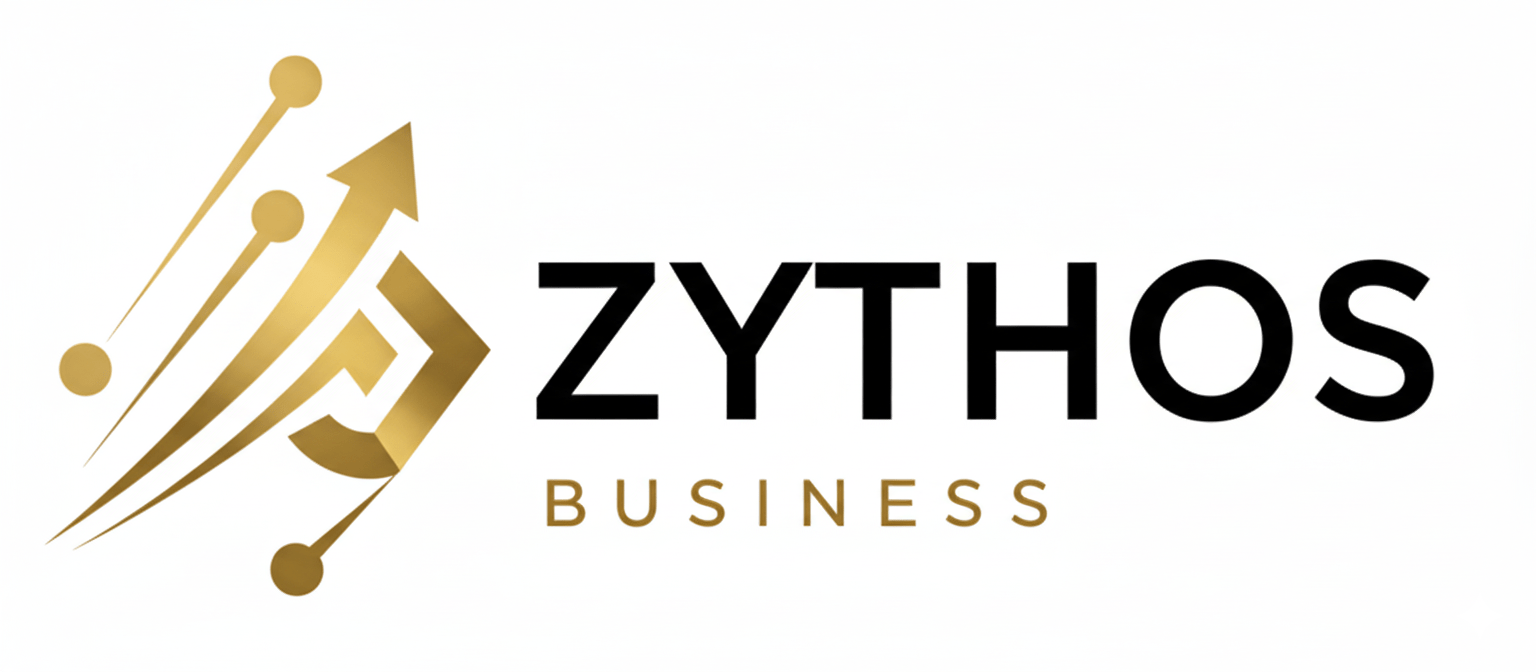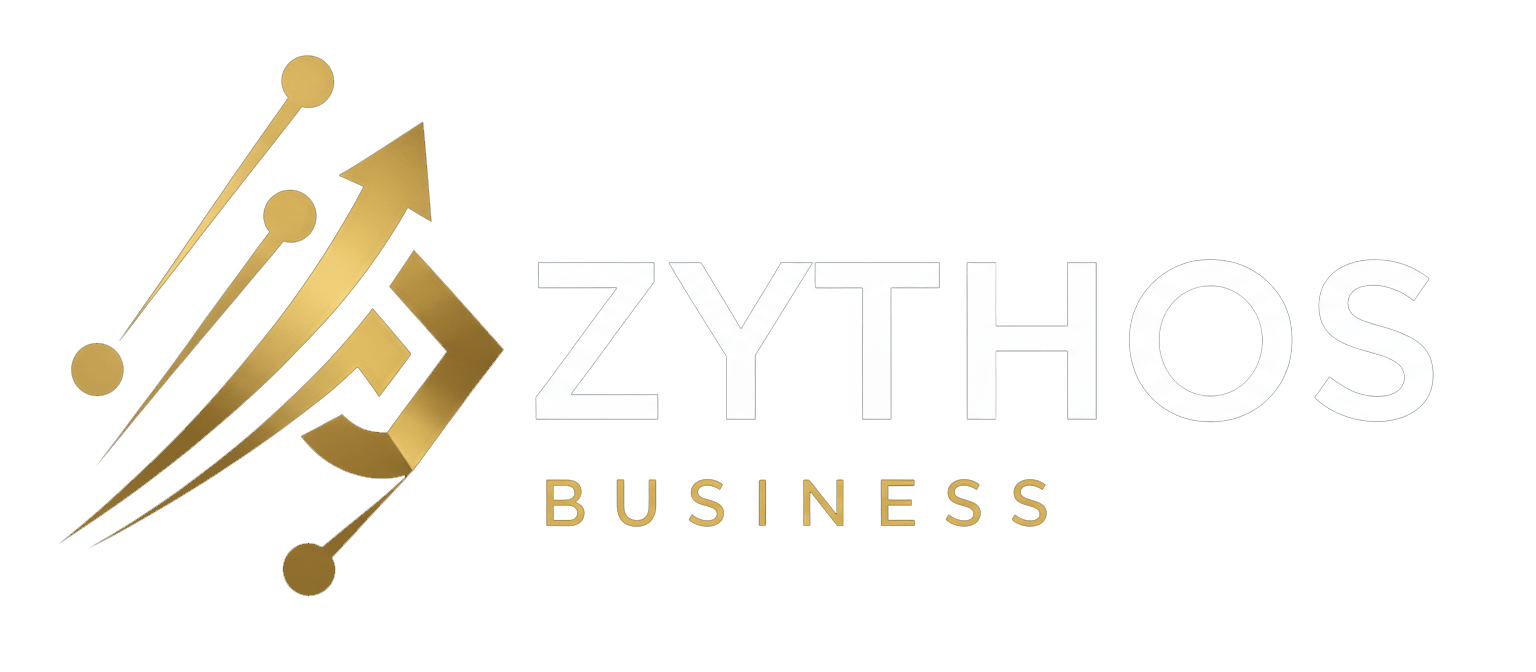Why adapting to Spain’s “Crea y Crece” Law and Verifactu isn’t a cost, but the first real investment in your company’s genuine digitalization. A strategic guide by Zythos Business.
The Calm Before the Regulatory Storm
Across the Spanish business landscape, a dense fog of information surrounds the imminent new fiscal and invoicing obligations. Companies sense a seismic shift is coming, but the complexity of the legislation, overlapping deadlines, and technical jargon—Verifactu, “Crea y Crece” Law, UBL, CTC—have generated a dangerous paralysis.1
This situation is summarized by an alarming paradox: a late 2025 study reveals that while 49% of SMEs and self-employed professionals in Spain are “very or quite concerned” about the penalties, a staggering 54% admit to “knowing little or nothing” about the new regulations.2 It’s a classic dichotomy of high anxiety and low preparation.
This paralysis is, in itself, the greatest risk. Companies that view this transition as a mere bureaucratic hurdle, a tedious software update to be postponed until the last minute, are making a first-rate strategic error. The mandatory implementation of the electronic invoice is not the finish line; it is the starting gun.
This article will demonstrate that the correct question is not how to comply with the legal minimum, but how to leverage this obligation to catalyze a deeper, more profitable business transformation. The regulation is not simply a cost to be borne; it is the first mandatory investment in your company’s real digitalization. It is the opportunity to use a legal mandate to elevate your company to “another level,” abandoning obsolete processes and embracing the efficiency and data intelligence of the 21st century.3
The 2026 Labyrinth: Decoding the Regulatory Tsunami (Ley Crea y Crece vs. Verifactu)
To design a strategy, you must first understand the playing field. The primary mistake companies make is confusing the two major regulations that are converging. Although often grouped together, the “Anti-Fraud Law” (which gives rise to Verifactu) and the “Crea y Crece Law” (which mandates B2B e-invoicing) are two parallel pillars with distinct objectives and timelines.1
The First Pillar: The Anti-Fraud Law and the Verifactu System
The first pillar is the Regulation developing the Anti-Fraud Law (Ley 11/2021).5 Its colloquial name is “Verifactu.”
- Purpose: The objective is purely fiscal control and combating fraud.1 It seeks to eliminate “dual-use software” and guarantee the integrity and inalterability of billing records.
- Mechanics: It requires that all software used for billing (from a restaurant’s POS to a complex ERP) be capable of generating unalterable records. Furthermore, it must be able to automatically send billing records to the Tax Agency (AEAT), either continuously or on demand.6 It is, in essence, a traceability and anti-fraud system.4
- Deadlines (The Confusion): Although the first deadlines were set for July 1, 2025 7, delays in the publication of technical specifications have shifted the actual mandatory dates. The most recent estimates suggest a staggered rollout in 2026:
- January 2026: Mandatory for companies subject to Corporate Tax (like Limited Liability Companies).4
- July 2026: Mandatory for all other SMEs and self-employed individuals.4
- Other sources confirm that Verifactu software compliance is expected to shift to 2026.9
The critical point to understand is that Verifactu is not B2B e-invoicing. It is a reporting system for the tax authorities that affects all invoices issued, including B2C (to final customers). A company can have 100% Verifactu-compliant software and still be completely non-compliant with the second law.
The Second Pillar: The “Crea y Crece” Law (B2B Invoicing)
The second pillar, and the one with the greater strategic impact, is the “Crea y Crece” Law (Ley 18/2022).4
- Purpose: Its objective is different: to fight late payments and digitalize B2B commercial relationships.10 By making invoices electronic and traceable, it facilitates the monitoring of payment terms.
- Mechanics: This law mandates that all invoices issued and received in B2B transactions (between companies and/or self-employed professionals) must be in a structured electronic format and transmitted via private platforms or a public solution.9 This marks the end of the “PDF attached to an email” as a valid invoice in the B2B sphere.
- Deadlines (The Uncertainty): Herein lies the greatest uncertainty. The deadlines are not fixed dates but are tied to the final publication of the technical regulation (which was in public consultation in April 2025).9 Once that regulation takes effect, the timelines are:
- Phase 1 (Large Companies): Companies with an annual turnover exceeding €8 million will have 1 year (12 months) to adapt.7 If the regulation is approved in early 2026, their obligation would begin in 2027.
- Phase 2 (SMEs & Freelancers): The rest of the companies and self-employed professionals (turnover under €8 million) will have 2 years (24 months) to adapt.7 Following the example, their obligation would begin in 2028.
The Regulatory Labyrinth: Key Differences and Deadlines
The confusion of 54% of SMEs 2 is understandable. They face a matrix of technical and procedural obligations that begins in 2026 and will not be complete until 2028, at the earliest. The following table simplifies this chaos, positioning the facts clearly:
| Feature | Verifactu Regulation (Anti-Fraud Law) | “Crea y Crece” Law (B2B Invoice) |
| Primary Objective | Tax Control & Anti-Fraud 1 | Fight Late Payments & B2B Digitalization 10 |
| Scope of Application | All invoices issued (B2B & B2C). Reporting to Tax Agency.4 | Only B2B transactions (between companies/freelancers).4 |
| Deadline (Companies > €8M) | January 2026 (Estimated) 4 | 12 months post-regulation (Estimated 2027) [11] |
| Deadline (SMEs & Freelancers) | July 2026 (Estimated) 4 | 24 months post-regulation (Estimated 2028) [11] |
The conclusion is clear: a “wait and see” strategy is unsustainable. The cost of poor planning—for example, choosing a software in 2026 that only meets Verifactu requirements but isn’t ready for the “Crea y Crece” Law—is exponentially higher than the cost of a strategic consultation today.
The Hidden Cost of “Just Complying”: Why Inaction is Your Greatest Risk
The disconnect between regulatory reality and business preparation is alarming. It’s not just that 54% are unaware of the law 2; it’s that the current infrastructure of SMEs is not ready for the change.
- A recent study indicates that only one in 10 SMEs in Spain currently uses electronic invoicing in its B2B transactions.14
- As of late 2025, just months before the first Verifactu deadline, only 8% of SMEs had implemented the necessary software.2
- Perhaps the most concerning data point is that 35% of companies do not even have a basic invoicing software on which to build, and 80% of them have no alternative in mind.2
These figures paint a picture of widespread inaction. But this inaction is not due to laziness; it’s due to fear. Companies perceive the “pain points” of the transition, but they are focusing on the wrong ones.
Beyond the Price of Software (The Real Pain Points)
The most common mistake is viewing this adaptation as a simple software cost. However, the true “pain points” that paralyze SMEs are deeper and more strategic:
- Uncertainty and Fragmentation: Cost isn’t the only factor. 13% of SMEs cite “regulatory uncertainty” as a barrier.2 They suffer from “frustration with market fragmentation and operating on multiple platforms.”2 They choose badly, they choose late, or worse, they don’t choose at all, waiting for a clarity that won’t come without guidance.
- Fear of Initial Investment: The cost of acquiring or updating software that meets all requirements is a significant barrier, especially for SMEs and startups.15
- Fear of Security: The idea of all company billing being connected and reporting data generates real concerns about the privacy and confidentiality of sensitive commercial information.15
- Fear of Human Error: Poorly managed digitalization doesn’t eliminate errors; it amplifies them. “Copying amounts or data by hand” 16 in a new system that is instantly connected to the tax authorities can have immediate fiscal and accounting consequences.
The Strategic Danger of the “Band-Aid Solution”
The real “hidden cost” is not the price of the software; it’s the business disruption and loss of agility that come from a “Band-Aid solution.”
The rigor of the new law is absolute. As analysts point out, “[payment] delays will be recorded, and companies will have less room to maneuver.”16 This, inevitably, “forces a better organization of the treasury.”16
This is where the “Band-Aid solution” fails spectacularly. Let’s analyze the cause-and-effect chain of a bad decision:
- An SME, scared by the penalties 2 and pressured by the 2026 deadline, buys the cheapest Verifactu software it can find.
- This software complies with Pillar 1: it generates invoices with a QR code and reports them to the Tax Agency. The company breathes a sigh of relief.
- A year later, the Pillar 2 obligation (“Crea y Crece” Law) comes into effect. The SME discovers its “Band-Aid” software cannot generate the structured UBL/XML formats or connect to the B2B exchange platforms.
- Result: The SME is forced to throw away its 2026 investment and buy completely new software, duplicating costs, suffering a second data migration, and retraining its employees.
- Worse still, this “Band-Aid” software was never integrated with their accounting, banking, or CRM. Employees are still entering data by hand 16, eliminating any efficiency gains and perpetuating the risk of errors.
Thinking of technology as a one-time cost and not a recurring budget item (like a phone or the advisory service itself) is a fundamental error of the “status quo.”17 This regulatory obligation, while painful, is actually an “opportunity” for an SME to decide to “start investing part of its revenue in… transforming itself digitally in a tangible way.”17
The Strategic Pivot: From Tax Obligation to Business Opportunity
This is the core of the mindset shift. The electronic invoice is not the goal; it is the catalyst. It is the Trojan horse that introduces comprehensive digitalization into the company. The key is to understand that this transformation occurs on three levels, and most companies will get stuck on the first.
The Three Stages of Transformation (The Zythos Framework)
To elevate the conversation from the tactical (complying with a law) to the strategic (building a competitive advantage), we must use a clear framework based on the principles of digital transformation 18:
- Level 1: Digitization (Basic Compliance): This is the lowest level. It consists of converting information and documents from analog formats (paper, PDFs) to structured digital formats (like XML or UBL).11 This is where most of your competitors and traditional administrative services will stop. It is the bare minimum.
- Level 2: Digitalization (Operational Efficiency): This is where the benefits begin. Digitalization is not just having a digital file; it is integrating these digital technologies into existing business processes.18 The XML invoice doesn’t just sit in a repository; it flows automatically into the accounting system, the treasury management system, and the ERP.
- Level 3: Digital Transformation (The New Competitive Advantage): This is the ultimate goal. It is a fundamental rethinking of the customer experience, business models, and operations.18 It’s about finding new ways to provide value, generate revenue, and improve efficiency, all based on the data and automation achieved in Level 2.
The Immediate Benefits of Level 2 (Digitalization)
Focusing only on Level 1 is a waste. The true ROI of this mandatory investment is found in Level 2, where digitalization generates tangible and immediate benefits:
- Direct Cost Savings: This is the most obvious. Costs for paper, printing, postage, and, crucially, physical storage are eliminated.19 The risk of losing physical documents is also eliminated.19
- Cash Flow Optimization: This is the most critical benefit for SMEs. Automating invoice issuance and reception leads to “shorter delivery and collection times for invoices.”20 It allows for “better treasury management” and “easier tracking of payments made and automatic notification of overdue invoices.”21 Working capital is improved.
- Efficiency and Quality (The Hidden Benefit): This is where digitalization surpasses human processing.
- Speed: Automated solutions can reduce the execution time of a billing process by more than 95%.22
- Quality: This is the most profound benefit. When a process is automated, you “embed the knowledge and experience of the organization’s top experts into the solution.”22 Unlike a human, the software doesn’t depend on mood, skill, or fatigue. The billing and accounting process is always performed exceptionally 22, eliminating human errors 23 and ensuring regulatory compliance.
The Vision of Level 3 (Digital Transformation)
Once a company operates efficiently at Level 2, Level 3 becomes possible. The structured data flowing from invoicing ceases to be a legal requirement and becomes business intelligence.
- From Intuition to Data: The company can “make decisions based on data, not on intuitions or ‘gut feelings’.”24 It can analyze in real-time which customers pay late, which service lines are most profitable, or where supply chain bottlenecks are occurring.25
- New Opportunities: This new digital agility allows the company to expand. It can connect with customers in new markets (e-commerce), optimize the supply chain, or even create new subscription-based business models.18
Zythos Business: Your Partner for Transformation (Level 3), Not Just an Administrator for Compliance (Level 1)
The fundamental mistake is seeing this transition as an accounting problem or a software problem. It is a strategy problem. The mistake is hiring a “traditional administrative manager” 17 and expecting them to solve a global technological challenge, or hiring a software vendor and expecting them to understand your business strategy.
Beyond the Local Administrator
The digitalization of invoicing in Spain is not an isolated event. It is the local implementation of an unstoppable global trend: Continuous Transaction Control (CTC). Governments worldwide are adopting this model to gain real-time fiscal visibility.
This is where Zythos Business marks a fundamental difference. The Zythos philosophy is not simply to manage the books for a local SME; it is “Your company to another level,” managing “presence at a European level” and “adapting to the different EU legislations.”3
Zythos Business’s own research demonstrates this global vision. Their analyses of “The Compliance Mosaic: Spain in the Mirror of Global Electronic Invoicing” and “The Global Revolution of Continuous Transaction Controls (CTC)” 3 prove that Zythos is not reacting to Spanish law; they were anticipating it as part of a European and international trend.
When you choose Zythos, you are not hiring an administrator to comply with the “Crea y Crece” Law. You are hiring a strategic partner 3 who understands how this law is just one piece of a global puzzle. Zythos ensures that the digital solution you implement in Spain today is scalable and compatible with the European legislation and international standards of tomorrow.
An Integrated Digitalization Plan
Zythos Business does not sell software. Zythos designs the strategic plan that integrates invoicing technology with the rest of your business. We are the “two-in-one” 17: the strategic partner that merges expert administration with technological vision.
Our approach connects the e-invoicing mandate to your central services 3:
- Accounting: The automation of billing 23 directly feeds error-free, real-time accounting that is 100% compliant with Verifactu and the “Crea y Crece” Law.
- Business Strategy: The data generated 24 ceases to be a dead file and becomes the raw material for your strategic decision-making, cash flow optimization 21, and profitability analysis.
- Labor: The liberated operational efficiency 22 allows you to reallocate your staff from low-value manual tasks (data entry) to high-value tasks (analysis, customer service, business development).
- European Management: The chosen system will not be a Spanish dead-end. It will be a scalable platform, ready for European interoperability and EU compliance.3
Two Paths in 2026, One Strategic Decision
In 2026, the Spanish business owner faces a critical fork in the road. Both paths begin in the same place—the need to comply with the law—but they lead to radically different destinations.
- The Path of Compliance (Level 1): This is the path of reaction. It involves seeing the law as a cost to be minimized. It leads to buying a cheap “Band-Aid” software, suffering the frustration of market fragmentation 2, duplicating costs and migrations in 2027 and 2028, and continuing to manage the business with “gut feelings” 24 and manual processes.
- The Path of Transformation (Level 3): This is the path of strategy. It involves seeing the law as a forced investment.17 It leads to using this obligation as the catalyst to automate processes 22, eliminate errors 23, optimize cash flow 20, and build an agile, data-driven company ready for future growth.
You should not finish this guide with more questions than answers. Confusion is the current state of 54% of the market 2, but clarity is a strategic decision.
Zythos Business invites you to a Digital Maturity Diagnostic Session.
Before you choose a software, let us analyze your business strategy. Together, we will design a plan not just to comply with the law, but to capitalize on it.
Contact Zythos Business today and turn the bureaucratic challenge of 2026 into your strategic advantage for the next decade.



